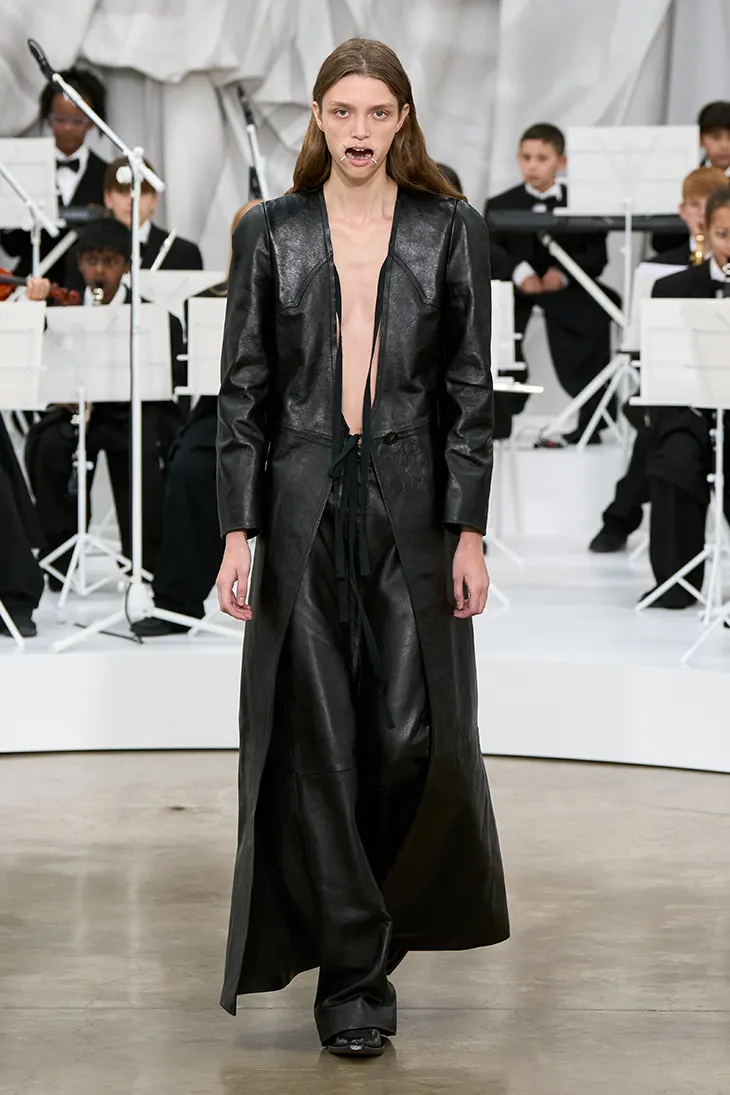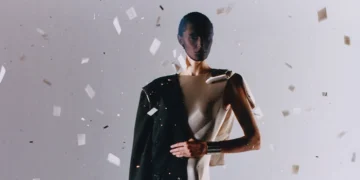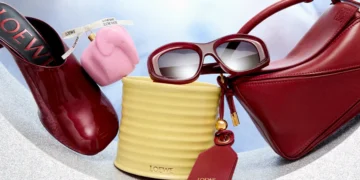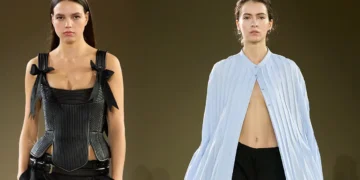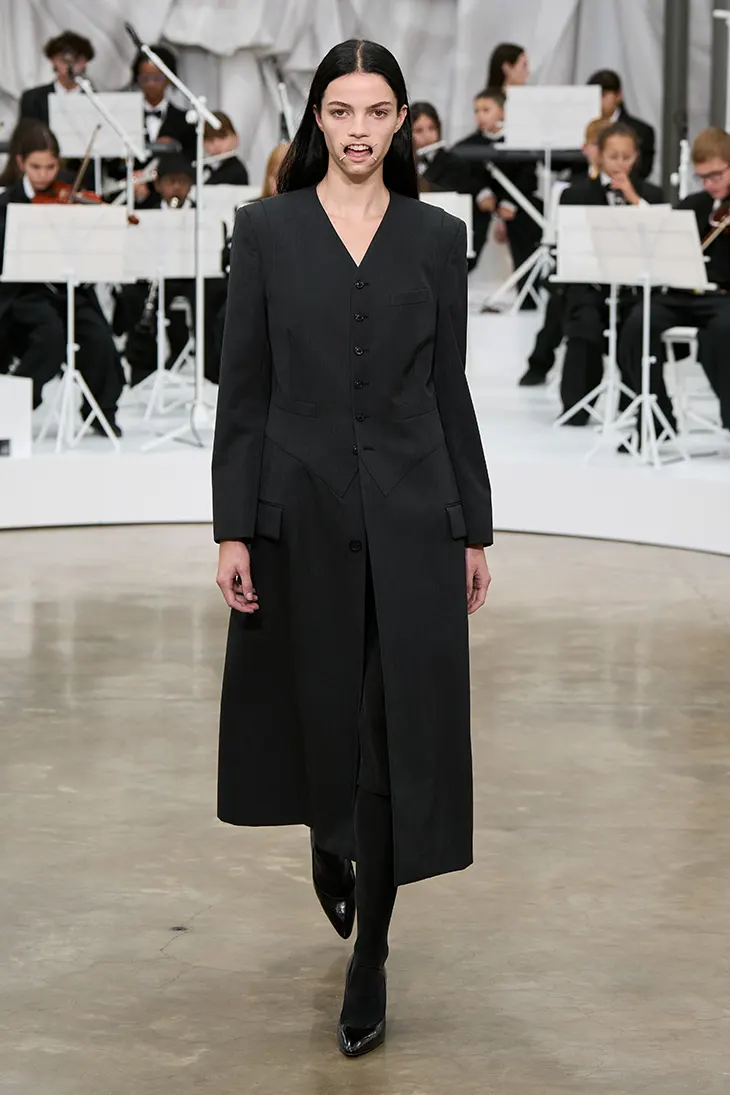
Maison Margiela presented its Spring Summer 2026 Co-Ed show in October 2025, introducing a range of concepts designed for everyday life. The collection mixed new proposals with evolutions of archival codes, creating a sequence of experiments that shaped a narrative about tailoring, craft, and reinterpretation.
The show began with a fresh vision for tailoring. A tuxedo waistcoat front cutaway formed the starting point, paired with a sharply rounded shoulder that traced the armhole socket. Tailoring carried ties, recalling the Maison Margiela blouse blanche worn by staff. Trousers came with exaggerated low crotches to elongate the line. Leather, wool, and denim shaped these pieces, with denim chosen to signal its role in the house’s history. This tuxedo cutline soon appeared in leather jackets and trenches, with lapels designed to fold inward and vanish from sight.
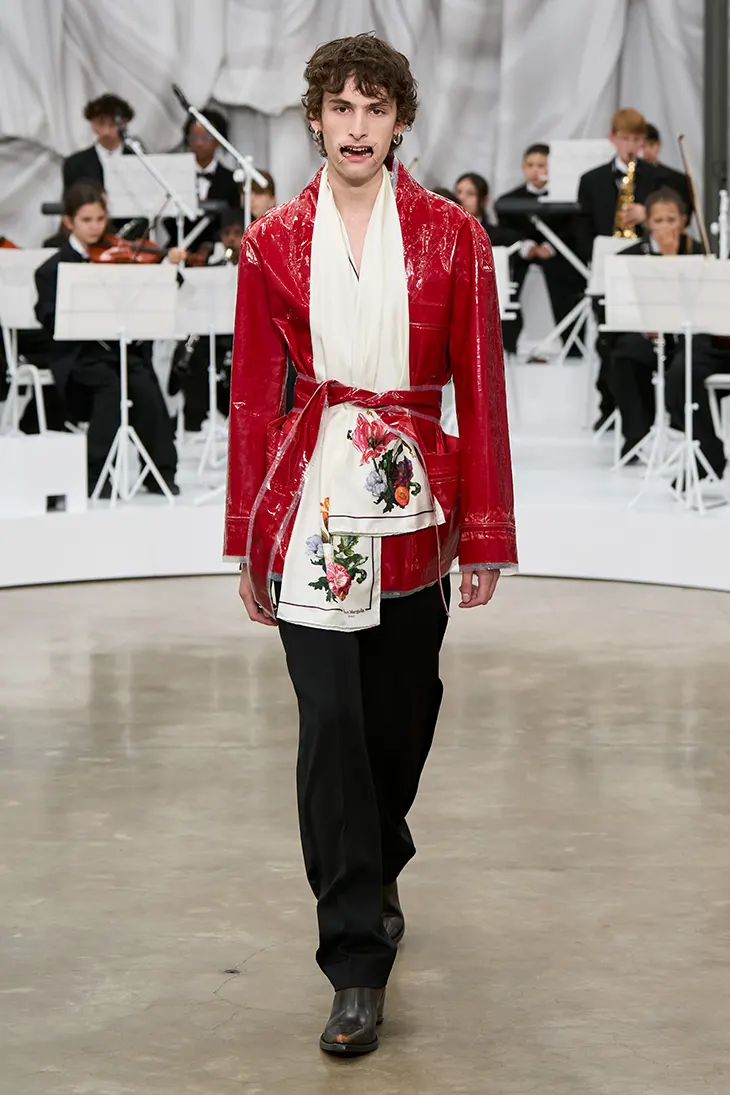
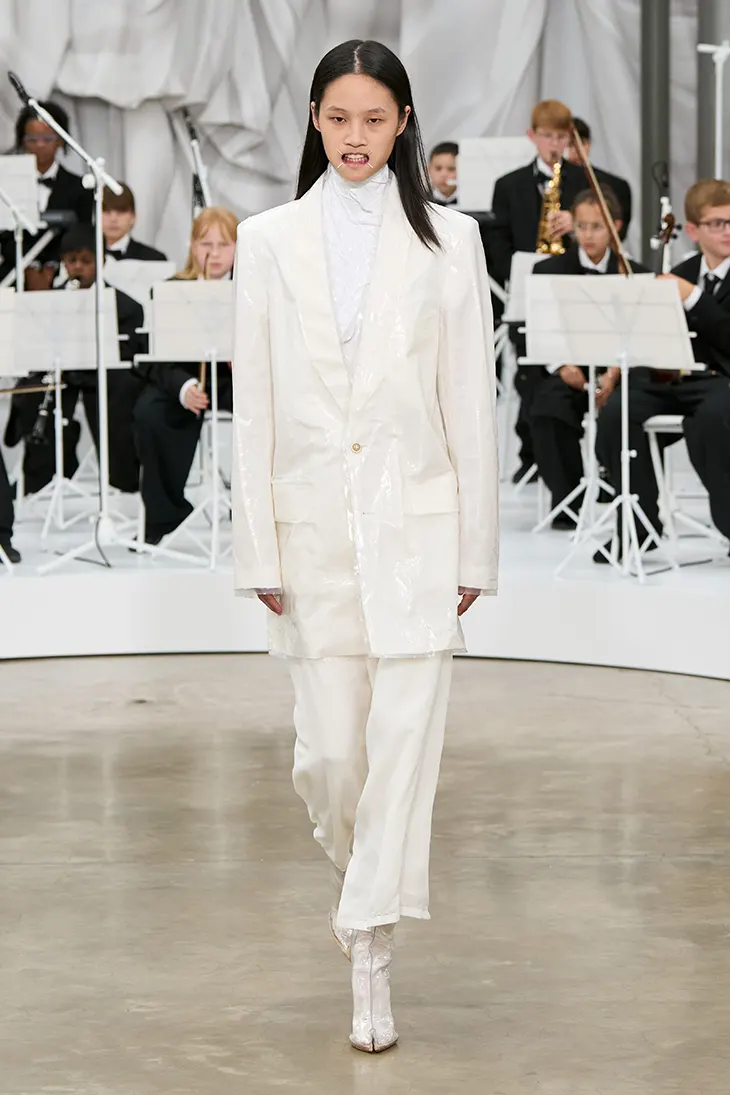
Slip dresses offered another narrative, recalling vintage references but altered through unconventional layering. Long slips appeared over tailored jackets, while shirts and trousers cut from lining fabrics wrapped entire suits. Oversized slips were taped and pulled into new volumes, evoking an experimental attitude. The idea of layering extended to knitwear embossed with printed paper, simulating peeling sixteenth-century wallpaper. This effect, first seen in the Artisanal 2025 collection, evolved here in floral patterns printed on silk dresses. Some florals were scanned directly from real flowers, their placement following the natural drape of the fabric.
Eveningwear took on permanence through an inventive approach: silk scarves fused to tuxedo shirts, jackets, and coats. These fixed scarves suggested accessories always in place, yet cut to allow full function of the garments. Plasticisation returned as another experiment, turning silk jackets into rainwear and clustering upcycled jewelry into hardened tops. Vast silk floral gowns were secured with taped bodices, adding theatrical presence. Models throughout wore Four Stitch mouthpieces, reinforcing the Maison’s exploration of anonymity by stripping away facial individuality.
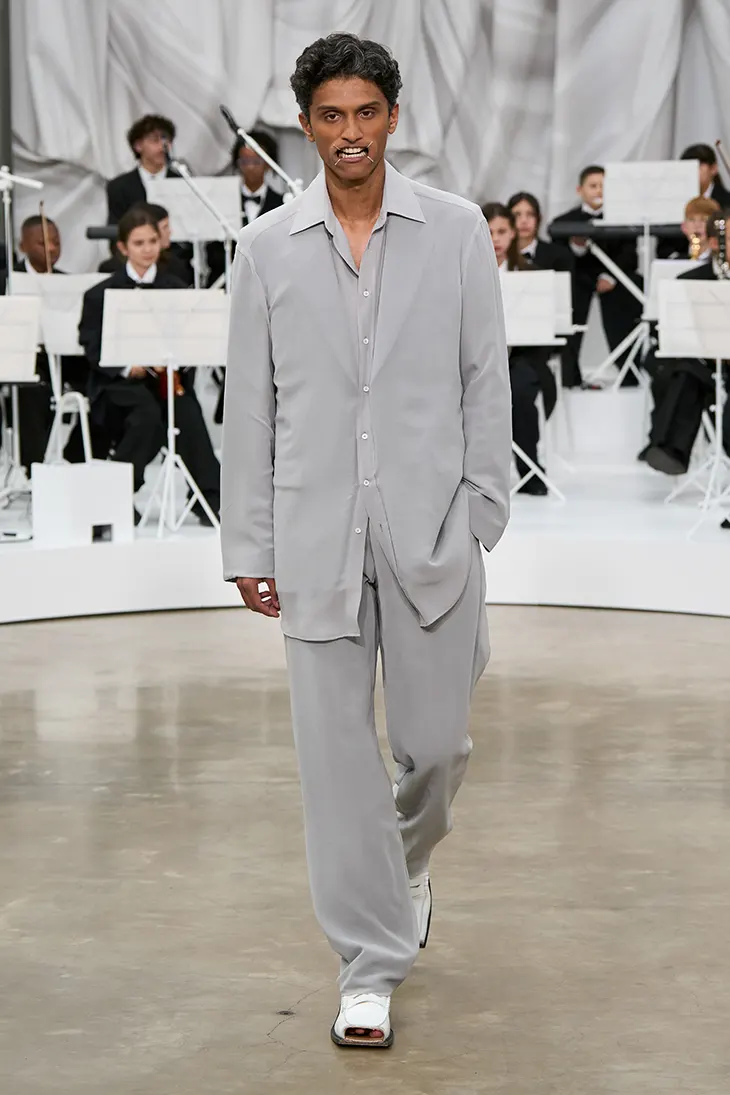
Footwear drew directly from the archive. Heel-less shoes, first introduced by the house, appeared again in pumps, western boots, and tall boots, with hidden heels embedded inside. The Tabi Claw from Artisanal 2025 entered ready-to-wear with plexi heels, joined by summer sandals shaped in plexi. Sneakers evolved into wide strapped high-tops, designed to wrap securely around the foot. Accessories extended this exploration: the Box Bag, cut in supple leather, featured reinforced thermoformed edges and tuck-away straps that converted the bag into a clutch. Jewelry resembled clusters scattered like forgotten treasures, continuing a theme from the previous season.
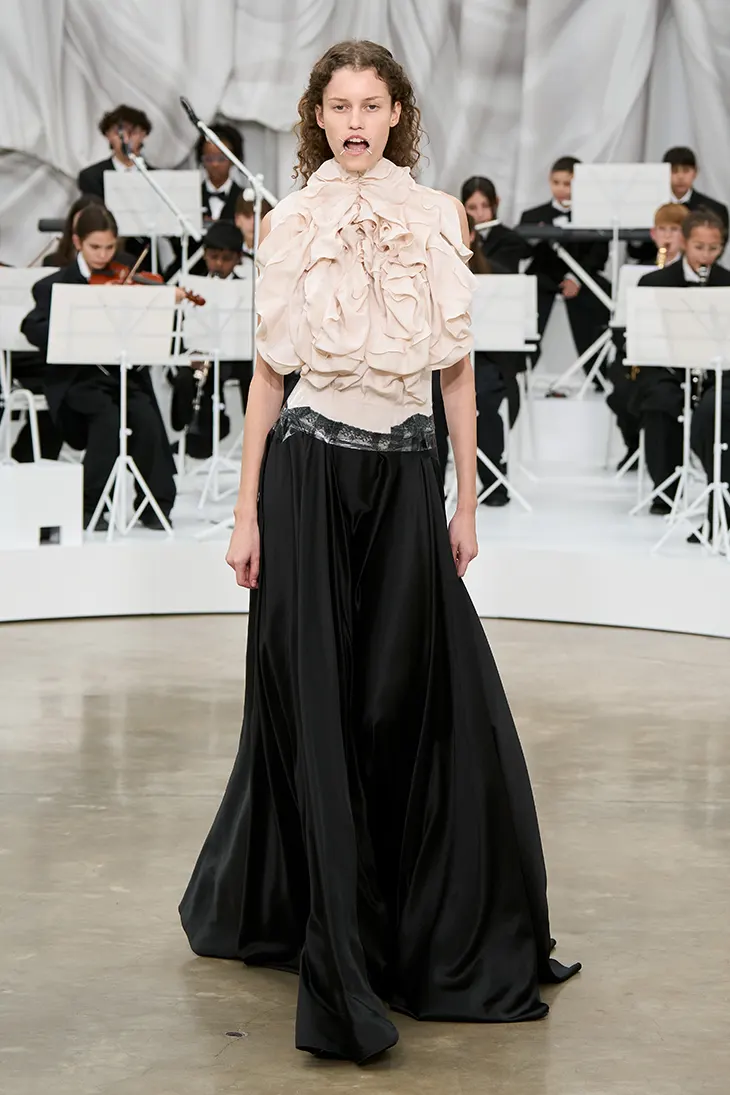
The staging itself added another layer. An orchestra of sixty-one young musicians, aged between seven and fifteen, performed during the show. All students came from Romilly-sur-Seine, gathered by the Orchestre à l’École association, which transforms entire classrooms into orchestras. Their presence underlined the Maison’s commitment to experimentation by framing design alongside music created by the next generation.
Maison Margiela’s Spring Summer 2026 show pushed forward ideas of construction, layering, and material play, drawing on its archive while introducing practical innovations. From tuxedo tailoring in denim to the return of heel-less footwear and plasticised silk jackets, the presentation framed everyday garments as opportunities for reinvention.
